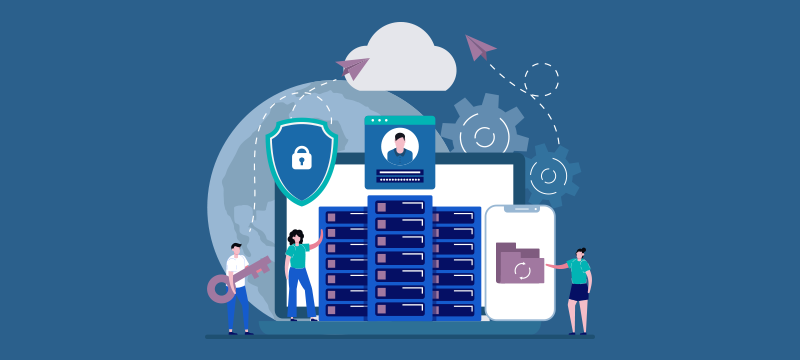Data loss can have catastrophic consequences for enterprises. It can take applications offline, stall operations, cause reputational damage and, if the result is a data breach, lead to substantial financial penalties. For enterprises with hybrid cloud systems, where data can be stored and transported across the public and private elements, robust and comprehensive security is essential. Here, we explain how this can be implemented.
Begin with physical security
Physical security underpins all other protections enterprises use to keep their data safe. It is there to prevent loss arising from natural disasters, like fire, flooding or earthquake, or from issues such as physical theft, accident or power failure.
Putting this in place in-house can be a significant challenge and extremely costly. Data centres should be located away from other buildings so fires cannot spread, a backup power supply is needed in case of a power failure from the national grid, and a backup comms system will be required too. Perimeter security is another important feature, and this should include CCTV, perimeter fencing, security patrols and access control.
Where enterprises have their hybrid clouds entirely hosted by a service provider, the challenges and costs of physical security are completely removed. The service provider is responsible for the physical security of their data centres and will even store backups of data at other data centres in different geographical locations to ensure data and applications remain available if there is a natural disaster.
Protection from hardware failure and human error
Hardware can break down and human beings can make mistakes, both of these can result in data loss. For organisations with vendor-hosted hybrid clouds, these issues can be completely overcome. With regard to hardware failure, the virtual nature of cloud servers means a server isn’t tied to a physical machine, so if a hardware issue arises, the server is just moved to different hardware without the organisation or even their end users being affected. As for human error, cloud storage can be configured in a way that prevents data from being erased, ensuring that it is always available.
Disaster recovery
A disaster recovery plan is essentially a form of insurance that protects enterprises against the potentially catastrophic effects of data loss. With an effective plan in place, the data can be restored swiftly and downtime minimised. Most organisations do this by having two separate storage systems, a primary system and a backup system. For enterprises with hybrid clouds, however, this isn’t necessary as the same cloud storage can be used for both backups and primary storage.
The architecture used in hybrid clouds has other advantages too. Placing data in a single store removes the security risk of having different copies of files stored in various locations and, by eradicating unnecessary duplicates, reduces the overall cost of storage. It also supports file-level restore and, when versioning is used, allows earlier file versions to be accessed if required.
Minimising data breach risk
Tougher regulations and penalties mean enterprises have to put robust measures in place to prevent data breaches from happening. Social engineering and phishing attacks are increasingly being used to target employees and the data most at risk is that which is stored on personal devices or users’ own cloud storage accounts, e.g., OneDrive or Google Drive. These personal accounts often lack the security that business data requires, especially if it contains personal or sensitive data, and as such can also result in compliance failure.
The significant threat that such weaknesses pose can be minimised in the hybrid cloud through the use of at-rest and in transit encryption. At the same time, ID and device management technology can be used to restrict how files are shared and stop workers from saving data to their personal storage. Should a breach happen, accurate logging also makes it simpler to find the source and hasten recovery.
Maintaining hybrid cloud security
As cybercriminals become more sophisticated and adopt new technologies, new threats will continue to emerge. What is sufficient security today, might not be so tomorrow and so enterprises need to continually check their systems to ensure they have the arsenal of security tools to keep their data safe and meet regulations. A good cloud provider will do exactly the same.
Conclusion
Its combination of private and public cloud elements means the hybrid cloud is one of the most secure solutions that enterprises can adopt. The provider ensures physical security is robust and that data is rigorously managed and encrypted, both at rest and in transit. Crucially, using a cloud vendor means this level of security can be achieved far more cost-effectively than when done in-house. For more information about our cloud solutions, visit Hyperslice.com.

